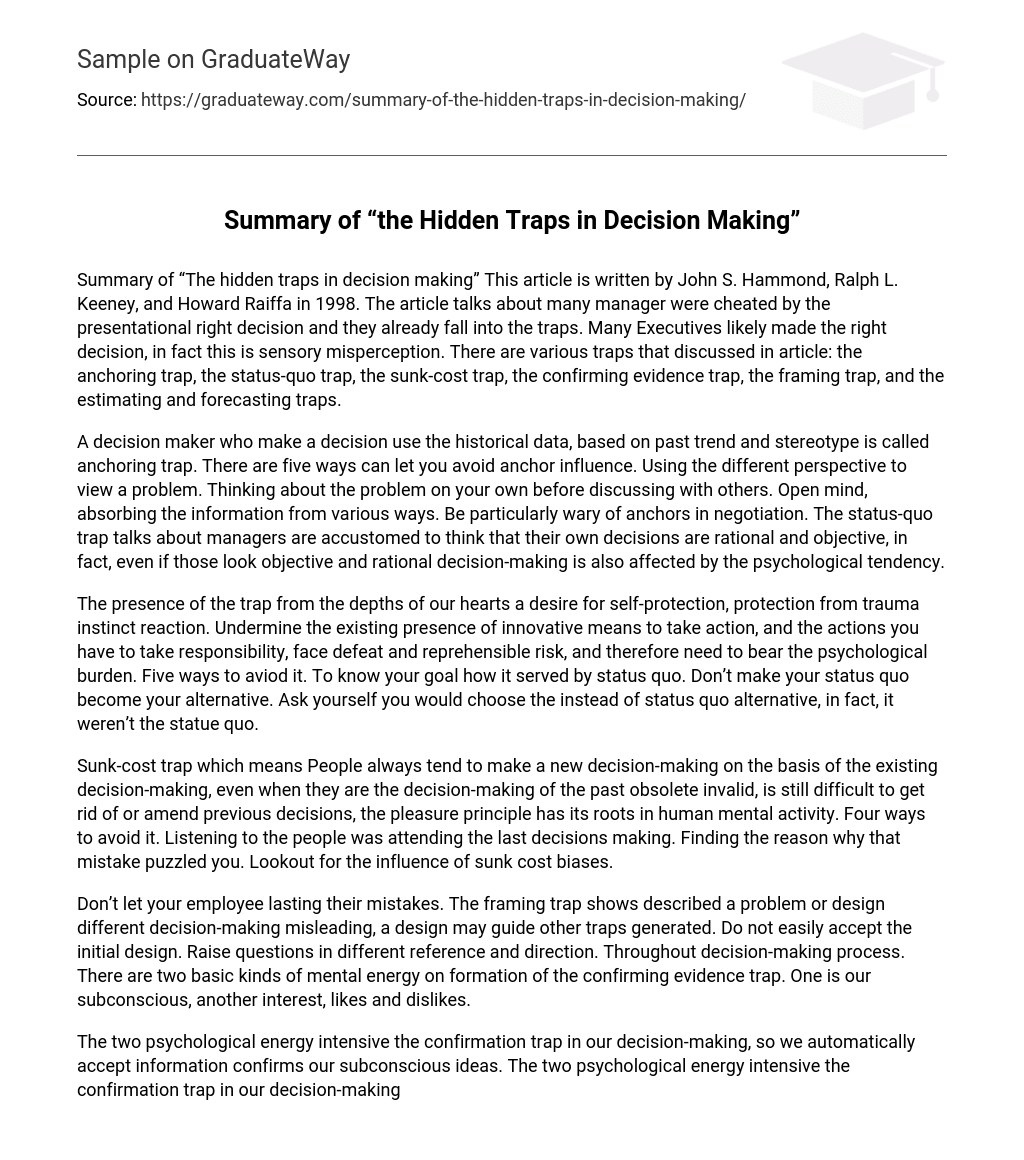Summary of “The hidden traps in decision making” This article is written by John S. Hammond, Ralph L. Keeney, and Howard Raiffa in 1998. The article talks about many manager were cheated by the presentational right decision and they already fall into the traps. Many Executives likely made the right decision, in fact this is sensory misperception. There are various traps that discussed in article: the anchoring trap, the status-quo trap, the sunk-cost trap, the confirming evidence trap, the framing trap, and the estimating and forecasting traps.
A decision maker who make a decision use the historical data, based on past trend and stereotype is called anchoring trap. There are five ways can let you avoid anchor influence. Using the different perspective to view a problem. Thinking about the problem on your own before discussing with others. Open mind, absorbing the information from various ways. Be particularly wary of anchors in negotiation. The status-quo trap talks about managers are accustomed to think that their own decisions are rational and objective, in fact, even if those look objective and rational decision-making is also affected by the psychological tendency.
The presence of the trap from the depths of our hearts a desire for self-protection, protection from trauma instinct reaction. Undermine the existing presence of innovative means to take action, and the actions you have to take responsibility, face defeat and reprehensible risk, and therefore need to bear the psychological burden. Five ways to aviod it. To know your goal how it served by status quo. Don’t make your status quo become your alternative. Ask yourself you would choose the instead of status quo alternative, in fact, it weren’t the statue quo.
Sunk-cost trap which means People always tend to make a new decision-making on the basis of the existing decision-making, even when they are the decision-making of the past obsolete invalid, is still difficult to get rid of or amend previous decisions, the pleasure principle has its roots in human mental activity. Four ways to avoid it. Listening to the people was attending the last decisions making. Finding the reason why that mistake puzzled you. Lookout for the influence of sunk cost biases.
Don’t let your employee lasting their mistakes. The framing trap shows described a problem or design different decision-making misleading, a design may guide other traps generated. Do not easily accept the initial design. Raise questions in different reference and direction. Throughout decision-making process. There are two basic kinds of mental energy on formation of the confirming evidence trap. One is our subconscious, another interest, likes and dislikes.
The two psychological energy intensive the confirmation trap in our decision-making, so we automatically accept information confirms our subconscious ideas. The two psychological energy intensive the confirmation trap in our decision-making, so we automatically accept information confirms our subconscious ideas. Do not unthinkingly accept the arguments of their own identity. Trust your own analyze and accept information. Looking for dare speaking future solicit opinions, but is not looking for people who will go along with.
The estimating and forecasting traps were made of tree traps the overconfidence trap, the prudence trap and the recallability trap. There are several ways can avoid it. Estimated time from the most extreme places. To be honest description of how to estimate. View all assumptions, memories confirmation is not subject to undue influence. Policy makers must be very careful to prevent, for these psychological traps, the best defense is conscientiously been warned in advance to prevent.





